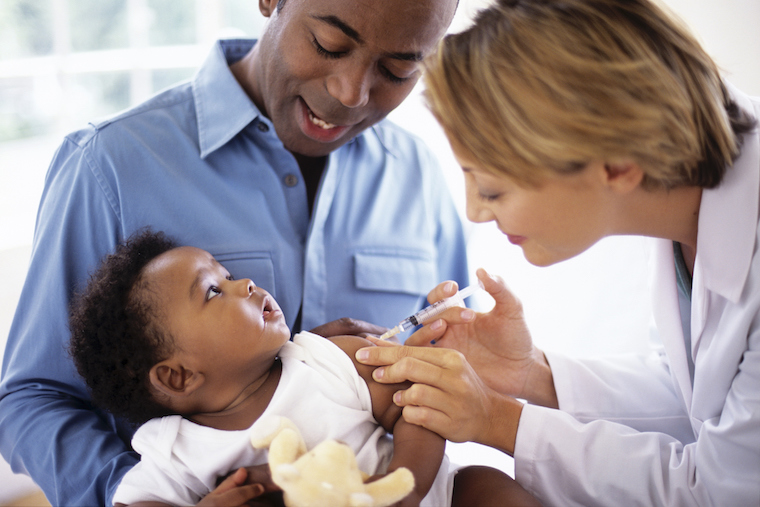First, some good news: There was a 30% increase in the overall number of infants getting the full series of common childhood vaccines during 2009-2018, a new study from the School of Medicine has found.
Now the troubling part: The total number remained much too low, especially among certain groups. Only 72.8% of infants aged 19-35 months received the full series of seven recommended vaccines, which protect kids from illnesses such as polio, measles, mumps and chicken pox. The federal government's target is 90%.
Those less likely to complete the vaccine series include African-American infants, infants born to mothers with less than a high-school education and infants in families with incomes below the federal poverty line.
Failure to complete the vaccine series puts children in danger of infection, illness and death. It also reduces the herd immunity of the entire population, allowing diseases to spread more easily. After the pandemic, I don't think anyone needs a lecture on why that's bad.
“These findings highlight that significant disparities still exist in protecting infants from preventable diseases in the United States,” said Rajesh Balkrishnan, PhD, of our Department of Public Health Sciences. “The low seven-vaccine series rates in low-income families are disheartening, especially with federal programs such as Vaccine for Children, which provides [free] coverage for their service.”
Disparities in vaccine uptake grew between low-income families and higher-income families during the study period. In 2009, families below the federal poverty line were 9% less likely to get the full series than families with annual income above $75,000. By 2018, they were 37% less likely.
Moms who had not completed high school were almost 27% less likely to have their infants fully vaccinated than moms with college education, the researchers determined. That disparity was way up from a prior study that looked at 1995-2003. Then, mothers who did not have a high-school degree were 7.8% less likely.
Completion of the vaccine series was significantly lower among African-Americans than among both whites and Hispanics. The researchers call the disparity “unacceptable” and say cost-effective interventions are needed to increase immunization rates and address vaccine hesitancy.
“These findings are particularly important in the context of the current COVID pandemic,” Balkrishnan said. “Particular attention needs to be paid to vulnerable populations in ensuring the availability and access to important life-saving vaccines.”
